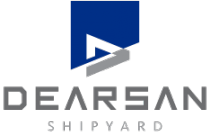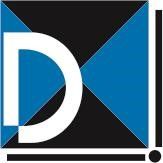Industrial Packaging Market Procurement Research – Pricing Trends and Analysis by SpendEdge
Global procurement intelligence advisory firm, SpendEdge, has announced the release of their ‘Industrial Packaging Procurement Research Report.’ The insights and data in this report provide a strategic analysis of the supply markets, factors influencing purchasing decisions, procurement best practices, pricing models, supplier landscape, and an analysis of the supplier capability matrix for the packaging and labeling industry. This report breaks down the data and analysis behind the procurement of industrial packaging and acts as an all-inclusive guide for making smart purchasing decisions.
This press release features multimedia. View the full release here: http://www.businesswire.com/news/home/20171011005589/en/

Global Industrial Packaging Procurement Market Intelligence Report (Graphic: Business Wire)
“The growth of industrial packaging can be attributed to the rise of the construction industry, as it is one of the key end-users of the industrial packaging category,” says SpendEdge procurement research analyst Tribid Bora. “This industry requires industrial packages for the transportation of building material such as bricks, tiling, paving, beams, and brickwork,” added Tribid.
Looking for more insights from this report? Request a free sample report
SpendEdge sample reports are free of charge and provide insights that focus on cost-saving aspects of procurement and optimization of category spend.
Key Report Features
| Supply Market Insights | Negotiation Strategies | |||
| Procurement Best Practices | Category Risk Analysis | |||
| Cost Saving Opportunities | Key Supplier Analysis | |||
| Pricing Models | Supplier Capability Matrix | |||
Report Insights
- The global industrial packaging market is projected to grow at a CAGR of 4.21% during the forecast period due to the rising demand for industrial packages from end-user industries, such as food and beverage, construction, chemicals, pharmaceuticals, and automotive.
- One of the best practices that buyers can adopt is the evaluation of the maximum possible output of suppliers and measure the productive efficiency of suppliers. This helps them to get an understanding of the suppliers' capability to fulfill a sudden demand for industrial packages.
- The rising cost of raw materials is a key challenge that the buyers of industrial packaging need to overcome. They can closely observe the market price of raw materials and make the purchasing decision at an appropriate time to procure packaging products at the best cost.
This report is available at a discount for a limited time only: View the report snapshot before purchasing
Promotional Products Pricing Trends
The cost-plus and unit pricing models find comparable adoption in the industrial packaging market. The buyers who adopt the unit pricing model find it easy to align their manufacturing cycles according to requirements due to the defined number of products procured. The cost-plus model also has its merits; it provides transparency in the pricing structure as the cost of industrial packages depend on the production cost and raw material cost.
Get unlimited access to all our reports. Our Insights platform provides ready-to-use procurement research reports, latest supplier news, innovation landscape, markets insights, supplier tracking, and much more at the click of a button. Start your 14-day trial now.
We also customize reports to meet clients’ requirements.
Browse Related Reports:
- Global Pharmaceuticals Packaging Category - Procurement Market Intelligence Report
- Global Bio-Plasticizers for Packaging Category - Procurement Market Intelligence Report
- Global Retort Packaging Category - Procurement Market Intelligence Report
About SpendEdge
SpendEdge shares your passion for driving sourcing and procurement excellence. We are a preferred procurement market intelligence partner for Fortune 500 firms and other leading companies across numerous industries. Our strength lies in delivering robust, real-time procurement market intelligence that helps sourcing and procurement professionals make informed decisions. These innovative procurement solutions help enterprises transform structural capabilities, improve execution efficiency, and fast-track time to savings.
View source version on businesswire.com: http://www.businesswire.com/news/home/20171011005589/en/



